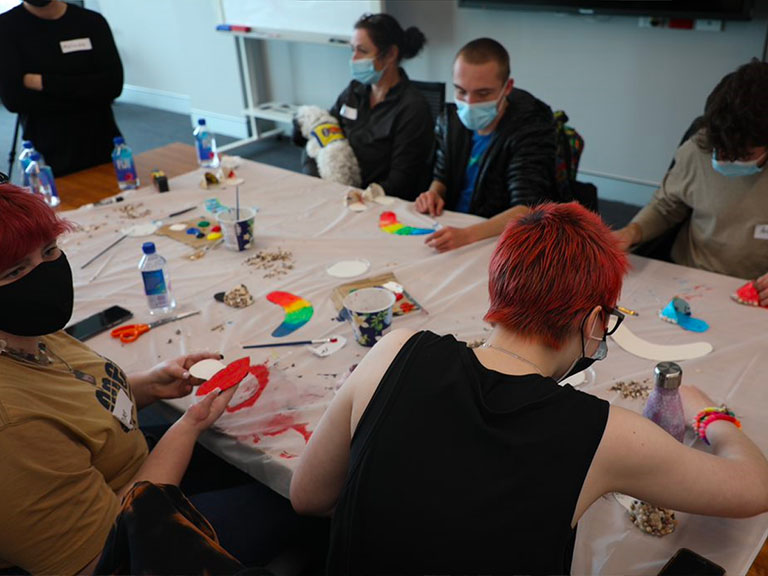Communication processes and tools will support person-centred care for the young person throughout their transition journey.
Good communication depends on:
- openness
- transparency
- collaboration
- willingness to work together.
Good communication between all parties is essential. It is especially important between the young person and their family and carers, their paediatric and adult health teams, and the young person’s general practitioner (GP).
Aspects of good communication
With the people involved
- Identify the people relevant to the transition process. This is especially important when multiple teams are involved.
- Hold case conferences with the young person, carers, paediatric and adult clinicians and GP.
- Identify concerns about new services and address these with the young person and their carer.
- Set realistic expectations about the transition process and next steps.
- Hold joint paediatric and adult clinics or joint appointments before the last paediatric consultation.
- Identify specific transition or young adult clinics.
- Ensure the GP receives letters and reports and is invited to case conferences and clinics where appropriate.
- Respect the privacy and confidentiality of the young person.
Ensure appropriate documentation
- Provide detailed referrals to new clinicians that cover key information so the young person can be triaged appropriately and appointments made within required timeframes (see Checklist for a good referral and handover or discharge letters).
- Share medical records and clinical information with the young person and new clinicians.
- Share a detailed discharge summary or clinical handover with all parties.
- Ensure adolescent-friendly language is used and inclusive and accessible resources are provided.
- Establish systems for collaboration and communication. Using technology where appropriate.
- Ensure electronic medical record (eMR) and health information systems capture details for carers and the person responsible.
It would have been great to have had a case conference with all members of the new team so everybody’s on the same page. I can’t explain these complex medical conditions as well as the specialist can. Zoran M, father of a 19-year-old*
Measures
System and service measures
- Transition plans and detailed discharge summaries are available and shared with all relevant parties.
- The GP receives a discharge summary or handover and outpatient letters.
- Joint transition clinics or specific transition clinics or appointments are identified.
Patient and consumer measures
- The young person (and family and carer) has access to their health information and is aware of all health professionals involved in their care.
Resources

References
- Blum R, Hirsch D, Kastner TA, et al. A consensus statement on health care transition for young adults with special health care needs. Pediatrics. 2002 12/01;110:1304-6.
- Crowley R, Wolfe I, Lock K, et al. Improving the transition between paediatric and adult healthcare: a systematic review. Arch Dis Child. 2011 Jun;96(6):548-53. DOI: 10.1136/adc.2010.202473
- Foster HE, Minden K, Clemente D, et al. EULAR/PReS standards and recommendations for the transitional care of young people with juvenile-onset rheumatic diseases. Ann Rheum Dis. 2017;76(4):639-46. DOI: 10.1136/annrheumdis-2016-210112
- Harris MA, Freeman KA, Duke DC. Transitioning From Pediatric to Adult Health Care: Dropping Off the Face of the Earth. American Journal of Lifestyle Medicine. 2011;5(1):85-91. DOI: 10.1177/1559827610378343
- Suris JC, Akre C. Key elements for, and indicators of, a successful transition: an international Delphi study. J Adolesc Health. 2015 Jun;56(6):612-8. DOI: 10.1016/j.jadohealth.2015.02.007
* Name has been changed to protect privacy